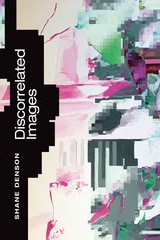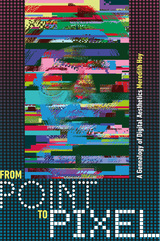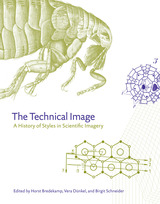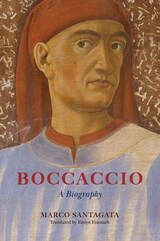3 books about Digital images

Discorrelated Images
Shane Denson
Duke University Press, 2020
In Discorrelated Images Shane Denson examines how computer-generated digital images displace and transform the traditional spatial and temporal relationships that viewers had with conventional analog forms of cinema. Denson analyzes works ranging from the Transformers series and Blade Runner 2049 to videogames and multimedia installations to show how what he calls discorrelated images—images that do not correlate with the abilities and limits of human perception—produce new subjectivities, affects, and potentials for perception and action. Denson's theorization suggests that new media theory and its focus on technological development must now be inseparable from film and cinema theory. There's more at stake in understanding discorrelated images, Denson contends, than just a reshaping of cinema, the development of new technical imaging processes, and the evolution of film and media studies: discorrelated images herald a transformation of subjectivity itself and are essential to our ability to comprehend nonhuman agency.
[more]

From Point to Pixel
A Genealogy of Digital Aesthetics
Meredith Hoy
Dartmouth College Press, 2017
In this fiercely ambitious study, Meredith Anne Hoy seeks to reestablish the very definitions of digital art and aesthetics in art history. She begins by problematizing the notion of digital aesthetics, tracing the nineteenth- and twentieth-century movements that sought to break art down into its constituent elements, which in many ways predicted and paved the way for our acceptance of digital art. Through a series of case studies, Hoy questions the separation between analog and digital art and finds that while there may be sensual and experiential differences, they fall within the same technological categories. She also discusses computational art, in which the sole act of creation is the building of a self-generating algorithm. The medium isn’t the message—what really matters is the degree to which the viewer can sense a creative hand in the art.
[more]

The Technical Image
A History of Styles in Scientific Imagery
Edited by Horst Bredekamp, Vera Dünkel, and Birgit Schneider
University of Chicago Press, 2015
In science and technology, the images used to depict ideas, data, and reactions can be as striking and explosive as the concepts and processes they embody—both works of art and generative forces in their own right. Drawing on a close dialogue between the histories of art, science, and technology, The Technical Image explores these images not as mere illustrations or examples, but as productive agents and distinctive, multilayered elements of the process of generating knowledge. Using beautifully reproduced visuals, this book not only reveals how scientific images play a constructive role in shaping the findings and insights they illustrate, but also—however mechanical or detached from individual researchers’ choices their appearances may be—how they come to embody the styles of a period, a mindset, a research collective, or a device.
Opening with a set of key questions about artistic representation in science, technology, and medicine, The Technical Image then investigates historical case studies focusing on specific images, such as James Watson’s models of genes, drawings of Darwin’s finches, and images of early modern musical automata. These case studies in turn are used to illustrate broad themes ranging from “Digital Images” to “Objectivity and Evidence” and to define and elaborate upon fundamental terms in the field. Taken as a whole, this collection will provide analytical tools for the interpretation and application of scientific and technological imagery.
Opening with a set of key questions about artistic representation in science, technology, and medicine, The Technical Image then investigates historical case studies focusing on specific images, such as James Watson’s models of genes, drawings of Darwin’s finches, and images of early modern musical automata. These case studies in turn are used to illustrate broad themes ranging from “Digital Images” to “Objectivity and Evidence” and to define and elaborate upon fundamental terms in the field. Taken as a whole, this collection will provide analytical tools for the interpretation and application of scientific and technological imagery.
[more]
READERS
Browse our collection.
PUBLISHERS
See BiblioVault's publisher services.
STUDENT SERVICES
Files for college accessibility offices.
UChicago Accessibility Resources
home | accessibility | search | about | contact us
BiblioVault ® 2001 - 2025
The University of Chicago Press









